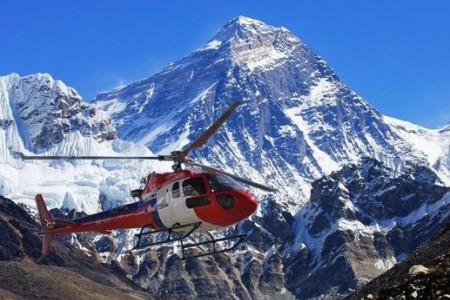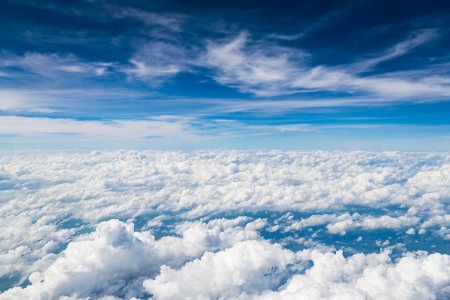Annapurna Base Camp trek is one of the most popular trekking trails in Nepal. The trek is popular among the beginners as well as the experienced trekkers. The trek is suitable for both the solo and group trekkers. But before you plan this trek, you must know about the Annapurna Base Camp difficulty level.
Reaching to the base camp of Mount Annapurna is the dream of many trekkers. The mountainous trek adds hurdles for you at every step of your trek. The ABC trek is quite demanding but with tolerance and courage, the trek is achievable by all level of trekkers.
The trek doesn’t require any advanced physical fitness level. However, it requires a stable health condition. This trek is absolutely amazing and relatively easier in terms of altitudinal variations.
The steady ups and down in the ridge might be challenging. The long walks (7–10 km per day) can be tedious. Walking through the stone steep is undoubtedly a challenge. But splendid views of the region is worth the difficulties.
Trek Difficulties during Different Seasons
Trekking into the Himalayas is never as easy as you think. Annapurna base camp isn’t a short trek. The trekking trail is uniquely diverse. The diverse landscapes and varying weather may bring more difficulties to the trek sometimes. Don’t worry! difficulties are what you learn from.
Weather in the mountain is always varying. The changes, however, are based mostly on the seasons. The rise and fall in the weather and temperature can introduce several difficulties in the treks.
With the change in climatic conditions and season the Annapurna Base Camp difficulty level differs.
Trek Difficulties during October-November

Autumn is the most popular trekking season in the Annapurna region. Autumn is the time after monsoon ends. So, by autumn refreshes the nature. You will see a clean and green version of vibrant sceneries.
However, you will still encounter several difficulties while trekking to the ABC in autumn. Some of them are:
- The trek route is the busiest, buzzing with lots of trekkers. If you are a peace lover, this time will be too chaotic for you.
- There are very few teahouses above Chhomrong. So, because of the heavy traffic of trekkers, you may have difficulty in finding a place to stay. Early booking the teahouses turns out to be helpful during these times.
- For food, you might have to stand in queues at the tea houses and lodges. This is tiring and least comfortable.
- During autumn, the tea houses and lodges may charge higher costs for accommodation and food.
Trek Difficulties During March-May

Now, it’s time that the Annapurna Base Camp experiences a colorful spring. Spring is the most popular season for the trek after autumn. The trek is fabulous in Spring.
However, you will have to encounter some of the difficulties during your ABC trek in Spring. Some of them are:
- With spring, most of the snow disappears along with the trek route. But the higher altitude regions are still very cold in early spring.
- Spring also sees a lot of trekkers in the Annapurna Base camp trek route. Thus, the trail is loud and noisy.
- You may have difficulty in finding rooms at the teahouses and lodges. You must share your room with fellow trekkers.
- You may have to wait for food for long in the tea houses. The tea houses are so busy in Spring.
- During the late Spring, you may see little rain in nights and evenings. So, the scenic views may not be so clear and splendid in these times.
- In some years, monsoon arrives earlier at the Annapurna Base Camp. So, you must carry rain gears and wear sturdy boots for the trek in late May.
Are you planning your Annapurna Base Camp Trek? Don't hesitate to contact us. Tell us your requirements, we can help you to make your trip memorable.
Trek Difficulties During June-September

The time from June to September is the monsoon period. Monsoon already begins as May comes to an end. You may have lots of difficulties while trekking to the Annapurna Base Camp in monsoon.
Some of them are:
- Walking under the sun during days become hotter and more humid. Thus, trekking at the lower altitude is quite uncomfortable.
- This is the monsoon period. You will have the risks of avalanche or mudslides at several points on the trek route.
- You will see the dark clouds hovering above your head. Most of the nights and afternoons see downpours. This obstructs the early morning views.
- The route becomes more slippery due to frequent rainfall in the region. The steep steps are difficult to walk on.
- Sometimes, the monsoon rainfall occurs regularly for a few days. If so, you may not enjoy the trek at all. Walking along the wet trail with covered views is never enjoyable.
- The best part of monsoon trek is the exceptionally beautiful vegetation and landscapes. But you must be very lucky to get the perfect and unobstructed views.
Trek Difficulties During December-March
Trekking to the Himalayas in winter is challenging, but not impossible. Think for a while! Do you really want to trek to the Annapurna Base Camp in winter? Are you ready to take every adventurous turn the trail has to offer?
If yes, take a look at some of the difficulties you might have during the trek. Here is the list:
- This is the coldest time. The trails in the upper elevations are covered in snow and difficult to walk on.
- Even the daytime temperatures are less than in other seasons. Even the sunlight may not feel so warm. You must wear in layers during the trek.
- There is the possibility of heavy snowfall even while you are trekking. Walking while it is snowing can be really hard.
- The temperatures at night drop below the freezing point (up to minus 17-degree Celsius). You will feel the cold wind passing through small holes in the windows. Carry a warm and good quality sleeping bags.
- The Thorung La Pass, (5,000 meters), is often blocked with snow. During the mid winter, the pass may remain closed for days. So, acquire all the necessary information on the local weather forecasts.
- Winter is also the period when the avalanche risks are most common. Avalanche risk is very dangerous while trekking to ABC in winter. Be cautious while walking past the avalanche risk areas.
- During winter, you might face any difficulties at any time. Unprepared difficulties will follow you till the end. So, collect pre-informations on a winter trek in the Himalayas.
Annapurna Base Camp Trekking Grade
Trek routes are graded on the basis of trek difficulties. During the Annapurna Base Camp trek, the highest elevation you will reach is 4130 meter. Though there are various obstacles, the trek is still a moderate graded trek. It is not too strenuous.
You can do the trek if you are a physically fit person. You must have patience and self-confidence. The trek is not a one day walk. You must walk for 5 to 6 hours per day during the trek.
The trekking trail is not uniform throughout the trek. Sometimes, you must walk some steep and rugged sections. Also, walking over the stone stairs is not so easy.
Though the trek does not involve any technical climbs, the trail is still full of risks to take on. However, with good physical conditions and a strong mindset, the trek is not so hard. The trek is enjoyable.
Are you planning your Annapurna Base Camp Trek? Don't hesitate to contact us. Tell us your requirements, we can help you to make your trip memorable.
Difficulty in Budget Management during ABC Trek
Annapurna Base Camp trek is an affordable trekking destination in Nepal. The Annapurna trek cost depends upon various factors. Some of them are the duration of the trek, type of trek, the trek route taken, etc.
The price of accommodation and food is not so expensive if you consider the remoteness of the place. The price of goods gets more expensive as you ascend to the higher altitudes.
To buy a bottle of mineral water, you should pay more than a dollar at high altitude areas.
The cost of material triples in comparison to the rate you buy them at Kathmandu or Pokhara. This is because it is difficult to transport goods in the Himalayan areas. The mules and the porters transport them.
If you don't carry enough hand cash with you along the trek, you might have difficulty in buying foods and water bottles. It is difficult to find ATMs on the trek route.
The Trail Difficulty
Mountainous trails are not straight and smooth. Trekking on the trail with a lot of ups and downs isn’t so easy. Such trails may add to Annapurna Base Camp difficulty level. This trek does not require any specific level of health and fitness requirements. But the tedious ups and downs definitely require a good stamina and patience.
Most of the trekkers usually face a common problem: exhaustion during long treks. There are various difficult sections on the trek like the 3300 steep stone steps. Trekking wisely in difficult sections requires a good physical conditioning and endurance.
Consider your limitations before planning a new day in the trek. Do not attempt a long walk in order to customize the number of trekking days. Always be aware of your physical strength.
You must build lots of energy. The trail is more difficult than traveling on a plain and hurdle free route. Plan your diet, carry some energy boosters, and keep yourself hydrated regularly.
Once the trek ends, you won’t remember the difficulties but the best experiences that the trek offered to you. Do not stress over the trek. Manage to complete it somehow. And then, the only things that matter is the beautiful memories that you’ve made.
Some Tips that Could Reduce Your Difficulties
- Get advice from your medical consultant. Acquire some knowledge of altitude sickness, precautions, symptoms, and remedies. Make sure you have a good health condition.
- Go on short hikes or treks. Having some experiences with walking will ease your trek. You can easily adapt the 7-8 hours long everyday walks during the trek.
- Do regular exercises to build up stamina and a good physique for the uphill and downhill hikes over the rugged trails.
- Keep yourself updated about the trekking region, the current weather and temperature there.
- Maintain a steady and continuous pace. This prevents the feeling of fatigue.
- Drink plenty of water to keep your body hydrated.
- Following the main trail. Do not go off the track. Don't take risky shortcuts.
- Take rests and water breaks. Carry some snacks. Enjoy them during the breaks.
- Plan your trek wisely. Hire a guide or a porter if you need one.
- Make proper acclimatization schedule. If you have not done altitude treks before, you must acclimatize properly. Your body must get familiar with the changes.
- Wear a kneecap, especially while trekking down. Make sure your knee does not hurt too much.
They say, ‘the best views come after the hardest climb’. If you are an enthusiastic person, difficulties can never stop you from collecting awesome trekking memories. Experience the beauty of diverse nature and culture in the Annapurna Base Camp trek.
With proper preparation, knowledge of the trekking trail, and strong stamina you can beat the Annapurna Base Camp difficulty level. For more details on the trek, contact us.


